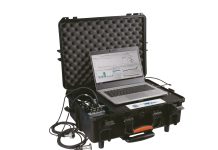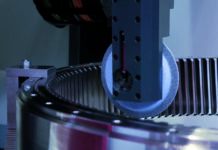How the use of hydraulics has changed in a very sophisticated market like the injection press one.

In a mature market like the one of injection presses for plastic materials, in the last decade we have witnessed a transformation that has seen standard hydraulic drives progressively undermined by electromechanical drives that have initially eroded what was a consolidated dominance. The main advantages of these drives were essentially the reduction of the energy consumption per product unit, higher operating precision and lower noise level.
Negri Bossi, headquartered at Cologno Monzese (MI), leader company in the development and production of these machines, for over ten years has been producing electromechanically-driven injection presses and its wide range of injection presses is today implemented by exploiting the potentialities of both drive typologies at best.
«The reaction of hydraulics manufacturers has in fact been prompt and has led to the development of circuit solutions able to assure a notable reduction of energy consumptions – states Angelo Brioschi, technical manager of Negri Bossi – and the following development consisted in “hybrid” machines, which has succeeded in taking the best of the two technologies that were contending for the market, being equipped with some hydraulic drives and with others of electromechanical type ».
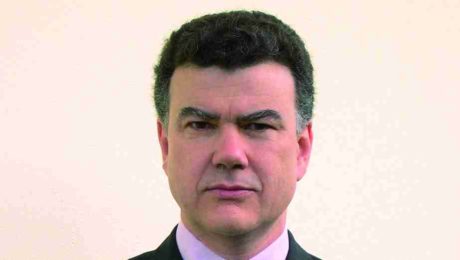
A machine for every need
Various interventions have allowed significantly enhancing the efficiency of hydraulic circuits. On one hand, hydraulics manufacturers’ approach to electronics, with proportional controls, servomotors and others, on the other hand also the replacement of asynchronous electrical motors with synchronous motors, featuring higher efficiency, for the pump drive.
«It is anyway worth underlining – adds Angelo Brioschi – that each single application always calls for a specific assessment by the designer. The market demands for machines with higher and higher performances (machining speed, precision, bigger distances among columns) coupled with a particular attention to the reduction of energy consumptions. It is up to the producer to find the right solution among the available drives, meeting customers’ requirements as much as possible ».
Just according to this vision Negri Bossi presents a complete press range, with three series of hydraulic presses (up to 800 t), two fully electrical series (up to 430 t) and two lines of hybrid presses reaching 1500 t. Besides, in the SE version it is possible the smart use of the combination composed by electrical motor, electrical motor control drive and hydraulic pump control modality, in order to obtain the best performance from the point of view of the energy consumption.
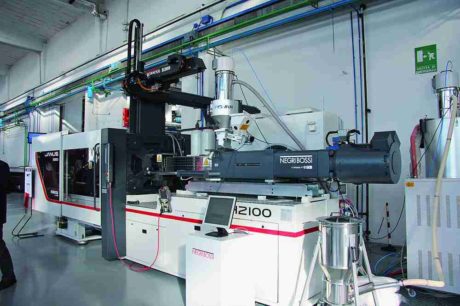
The company, injection division of Sacmi Group, currently employs about 200 people. The turnover of the plastic division inside Sacmi Group amounts to about 100 million Euros, with an export that has gradually become more and more important, to the extent of representing even 80% of the turnover over the last few years. Besides, to consolidate a stronger presence on rising markets, two subsidiaries in India and China are dedicated to the production of machines for those specific markets, of which it would not be possible to take care effectively with the only Italian production.
Face to face with Angelo Brioschi
To know better the design approach to hydraulic circuits, we have asked some direct questions to Angelo Brioschi.
What are the most interesting changes of the hydraulic market that have concerned your activity?
In my opinion, the most interesting changes in the hydraulic market can be identified in the stricter and stricter combination of hydraulics and electronics. The development of new products with enhanced diagnostics and the contribution that electronics has given to traditional hydraulics in terms of transmission efficiency are themes that already hold, and more and more assume, a primary role in the hydraulic transmission world.
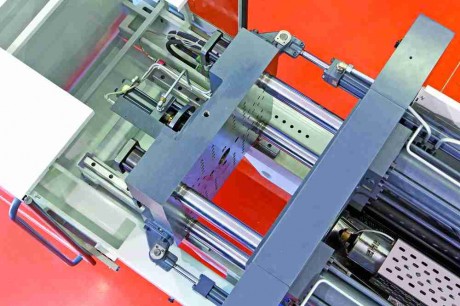
How has the hydraulic designer’s approach to the study of a new circuit changed?
The aspect of costs in design has been on the agenda for several years by now and consequently Technical Offices, Purchase Offices and Productive Departments work in closer and closer contact one another. This aspect was not present twenty years ago, when offices worked with goals strongly oriented to their own specialization. Nowadays the hydraulic engineer, while designing, can no more set a higher corporate interaction aside, even if he does not deviate from the targets of project, product and process. Designing is more complex but it leads, however, to better results in products and production flow.
Do you think that hydraulics design software currently available are suitable for your requirements?
We are satisfied with those presently used, mainly dedicated to the sizing of components and of hydraulic circuits. From this point of view, considering the strict relationship between product and its performance, we consider the availability of SW put at disposal by the supplier as a positive evaluation aspect of the latter. The use of adequate SW allows virtualizing the product better and better, thus anticipating possible problems and decreasing the “time to market”. Dealing with reality, and then the final testing of what previously devised, will allow assessing the validity of the SW used. We directly develop calculation systems for some specific phases.
Have the hydraulics suppliers proved to be up to challenges of a technological world rapidly evolving?
Yes, I think so: the ever-increasing introduction of electronics and the attention to energy aspects have upgraded hydraulic components. Efforts are made also for the introduction of new Fast Ethernet field buses, which besides favour a better diagnostics in components, not simple efforts considering the various typologies of field buses existing on the market.
Are there energy saving requirements for which also hydraulic components are expected to give a contribution?
Yes, certainly, I believe that the existence of hydraulic solutions in time will be technically connected with energy efficiency and noise reduction.
What future developments of hydraulic components should we hope?
A reduction of the component sizes and of their costs, keeping the transmitted power unchanged.

